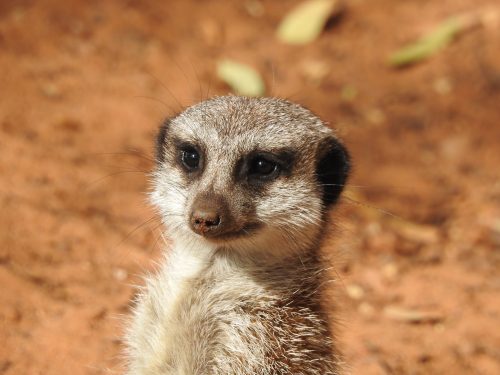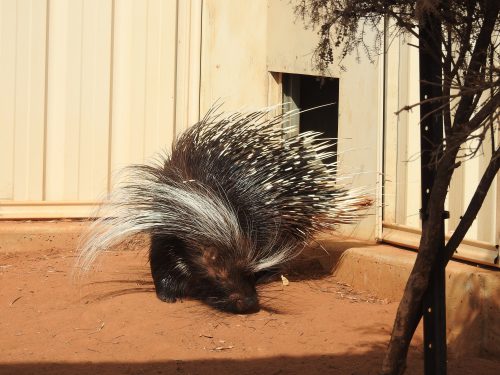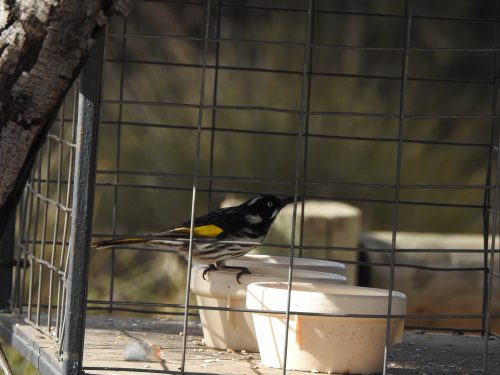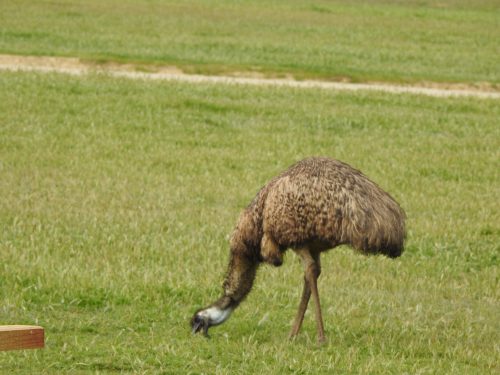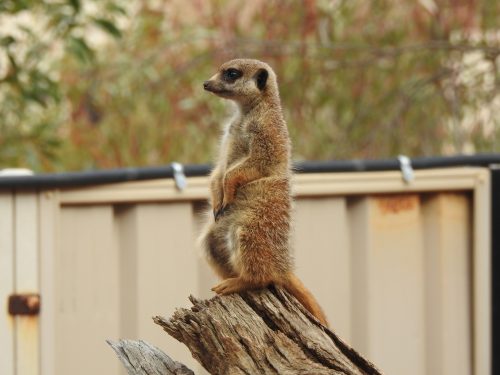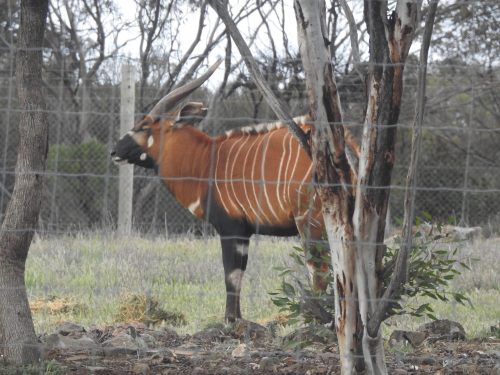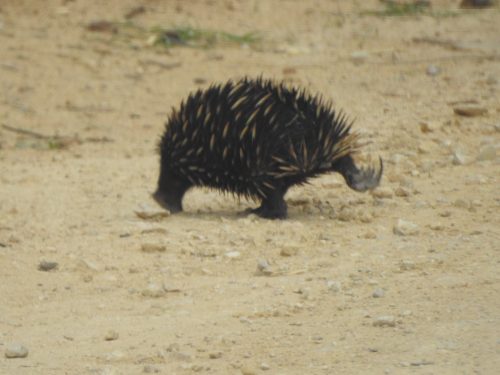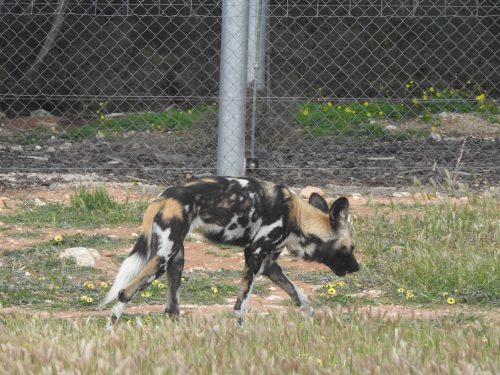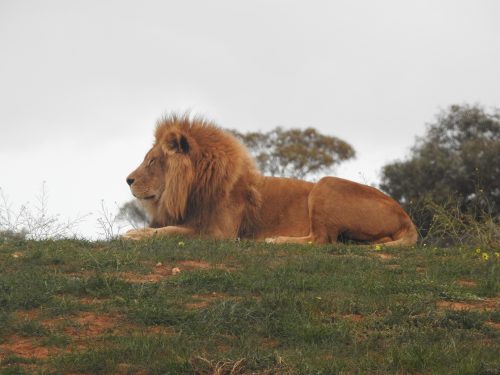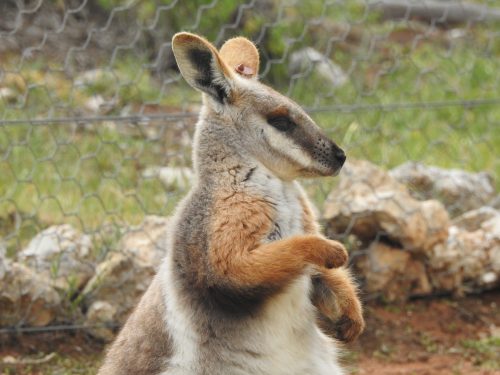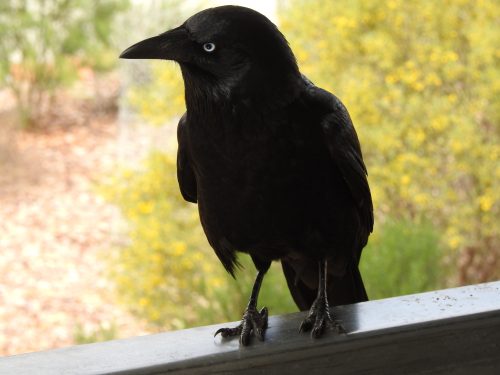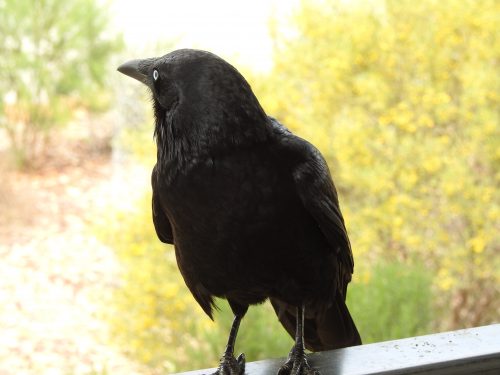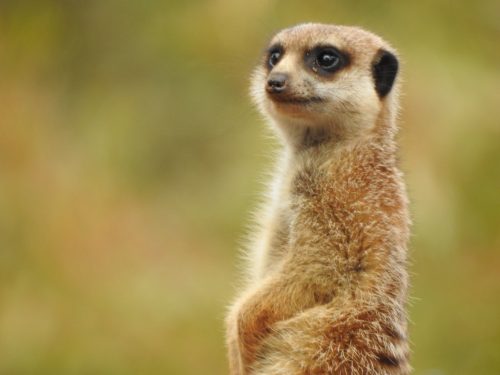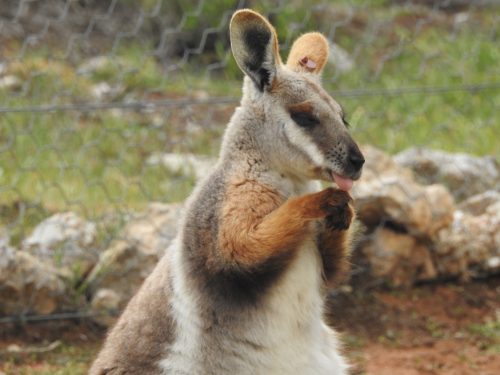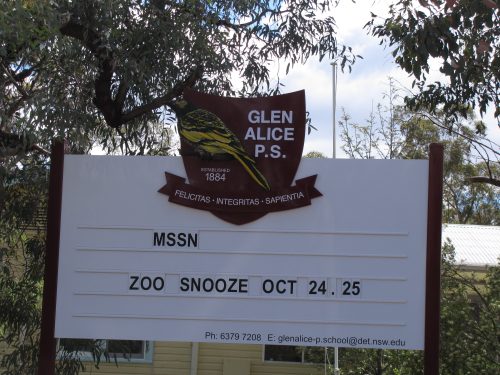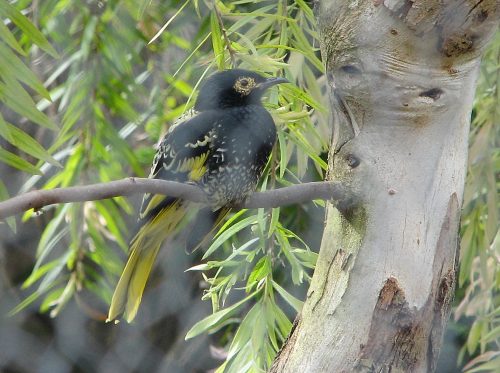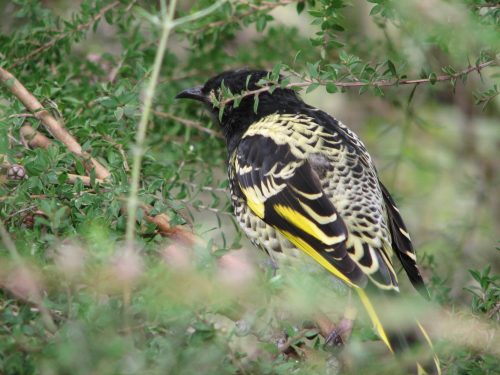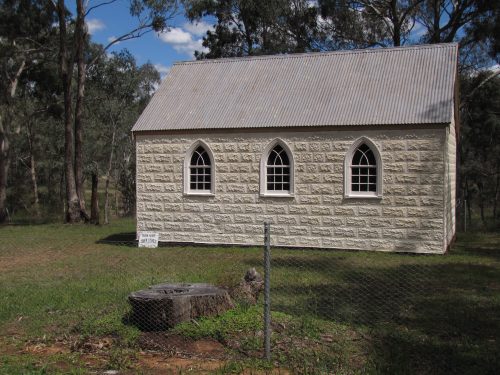Monarto Safari Park South Australia

Captive birds
My local zoo is the Monarto Safari Park just fifteen minutes from my home in Murray Bridge, South Australia. This zoo is a part of the Adelaide Zoo which is about an hour’s drive from here. I am a Life Member and try to visit often. One of my recent visits was last year when I went for one of the many walks in the park. On one of these walks, there is a large aviary which has a few captive birds in it, including the Tawny Frogmouths shown above.
Tawny Frogmouths are a widespread nocturnal species in this area and it is found throughout Australia, including Tasmania. From time to time I occasionally hear or see this species in my garden. My family and I love hearing the soft call of this bird and we have fond memories of hearing and seeing them on various camping trips.
Bush Stone-curlew
Another mostly nocturnal species in the aviary at Monarto is the Bush Stone-curlew, shown in the photos below. Again, this widespread species is found in many parts of Australia except Tasmania. Campers in our more remote areas may have heard its haunting call at night. On the other hand, in some areas, the Bush Stone-curlew has adapted to life in towns and cities, especially in Queensland where it is commonly seen on golf courses and reserves.
Annoyingly, this is one species I have yet to see in its natural environment and I only have photos like those shown below which have been taken in zoos. I must get out and travel more.
Non-captive birds
As visitors to Monarto Safari Park join the many bus tours through the large park, it is possible to see many of our local native bird species. These include Emus, Australian Magpies, Little Ravens, Brown Falcons, Black Kites, Wedge-tailed Eagles, various parrot species, as well as smaller bush birds like the Willie Wagtail, woodswallows, thornbills, wrens and a variety of water birds when there is water in the creek flowing through the park.
The best way of seeing and photographing these birds is to stroll along the many walking trails through the mallee scrub land. Warning: try not to wander into the African Lion enclosure, or you might find yourself invited to lunch – with you on the menu. By the way: the zoo has four new lion cubs born only recently and they are now on display.
One easily seen species is the White-winged Chough which is about the size of our magpies and ravens. They are often seen in family groups of 10 – 15 and as they fly the white on their wings can easily be seen. On my walk to see the aviary birds I also saw one of their mud nests (see the last photo below).



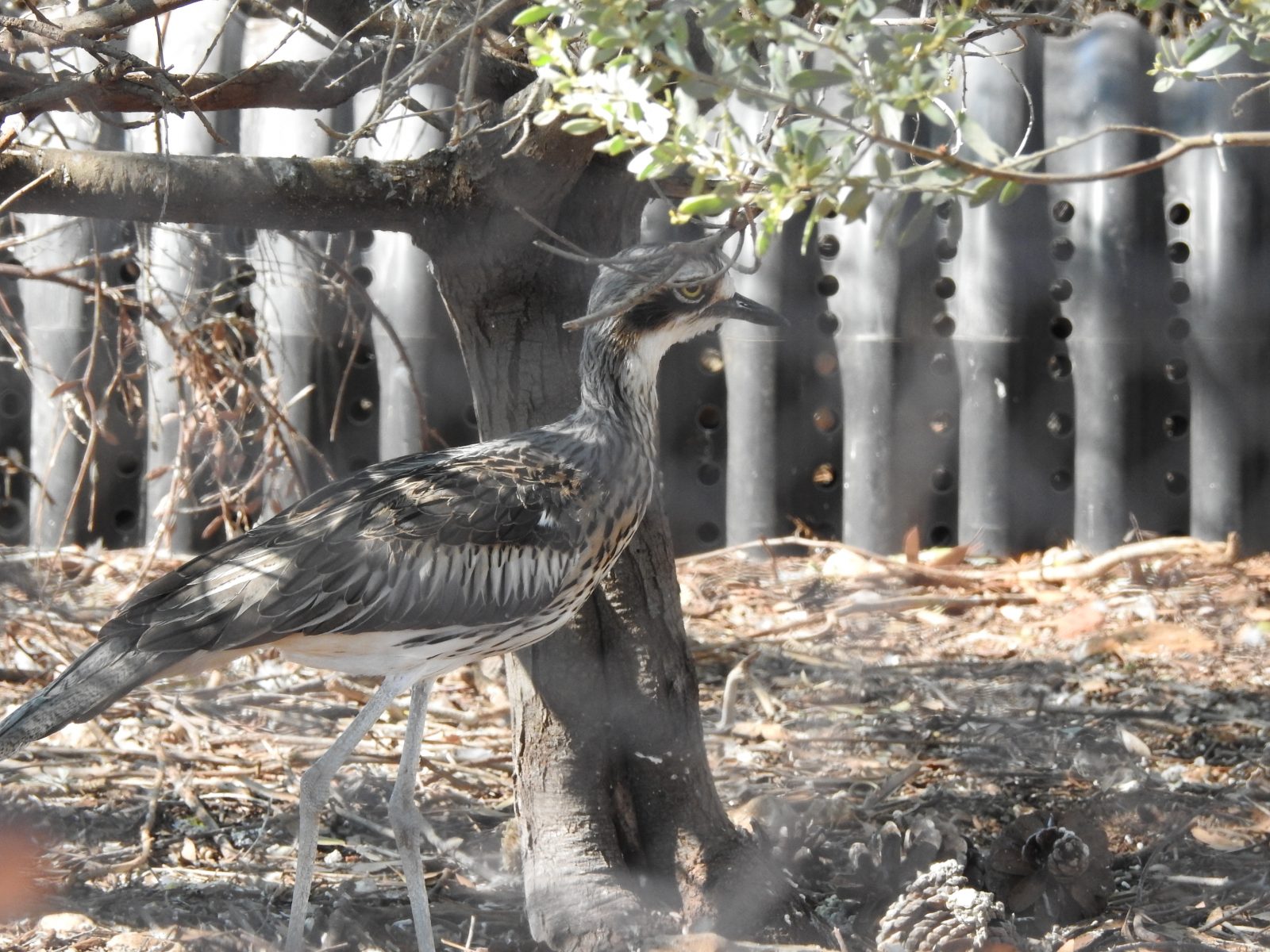
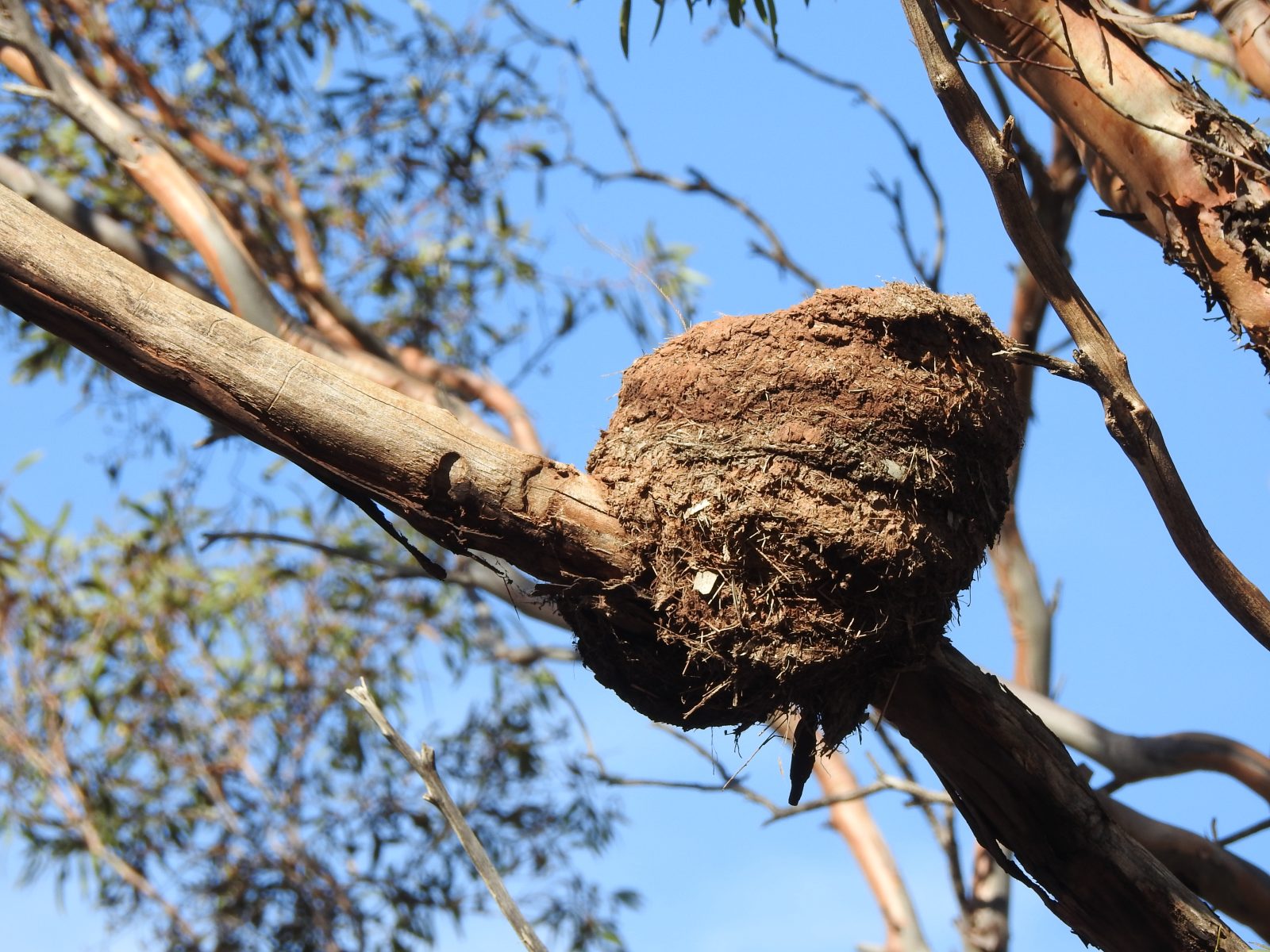
Birds and animals of Monarto Zoo
Recently my friend Keith took me to Monarto Zoo. This open range zoo is about an hour’s drive south-east of Adelaide, South Australia and about ten minutes drive from my home. Over the years I have lived nearby I have been many times to this zoo which is a part of the larger Adelaide Zoo. My friend Keith is a volunteer guide at the zoo, so it was a different experience having my own personal guide for the day.
On arriving at the zoo we had a look at the Meerkats and African Crested Porcupine displays near to the visitor centre. I love the Meerkats because they frequently pose so nicely for photos. In reality, they are just acting naturally, usually one or more are sentries keeping their eyes on the lookout for any danger. Some of our larger raptors such as the various hawks and eagles found in this area would happily swoop down to catch a meal.
I was also delighted to get a good photo of the African Crested Porcupine. I hadn’t realised that the two porcupines on display were present in the zoo. They are a fairly recent addition to the collection and it has been a while since my last visit.
After a short wait, we caught the first bus tour of the zoo. There are two main ways of seeing the zoo; most people take a bus tour but quite a few alight from the bus at various points during the tour to walk to see various exhibits, or to walk the good walking trails throughout the zoo property. We chose to do part of the tour and then get off and walk one of the tracks leading back to the visitor centre where we had a delicious lunch. (I can recommend the salt and pepper squid – but there are many more items on the menu.)
Next to the Meerkat enclosure and near to the bus stop the keepers have several bird feeders. A quick snap of the New Holland Honeyeater (photo above) was all I could get before the bus arrived. It might be a good idea to spend some time here within camera range in order to get a variety of species visiting the feeders. Just as I was getting on the bus a small flock of about six or seven Weebills were busily feeding in a mallee tree; they were moving too quickly for a photo and were partly hidden by the foliage.
During the bus tour, I saw Australian Magpies feeding on the ground in the American Bison enclosure as well as a few Little Ravens. In the Giraffe enclosure, there were more magpies and several Masked Lapwings. Part of the way around the bus trip we got off the bus and then walked along the Ridge Track, one of the walking tracks through the zoo. This track took us close to the Black Rhino enclosure where I managed a few photos of a leucistic (white) Australian Magpie. I will write about that in another post.
As we approached the Chimpanzee complex I kept a good lookout for Superb Fairy-wrens which I had seen in the bushland nearby on a previous visit. Alas – no wrens today. After a lovely lunch from the zoo restaurant, we went on another walking trail. This was the Mallee Fowl Track and it takes walkers past a large aviary which has two captive Mallee Fowl in it. This part of South Australia still has a small population of this endangered bird and I have seen a few birds just south of the zoo. I also know of several nests in the region but I am not sure if they are still being used. Near the aviary, I tried to get photos of a male and female Red-capped Robin, but they were not cooperating. I guess that means a return visit soon.
Good birding,
Trevor
Further reading:
Animals of Monarto Zoo
Earlier this week I posted here on this site an article about a recent visit to Monarto Zoo in South Australia. This zoo is not much more than about 15 minutes drive from my home in Murray Bridge. It forms a part of the great collection of animals in the Adelaide Zoo. I am a member of both so I try to visit the zoos on a regular basis. On this last visit, I not only saw a nice list of native birds which inhabit this open range zoo but I also managed a few good photos of many of the animals which I have decided to share today in this post.
One of the features of Monarto Zoo is that it is an open-range zoo. All of the larger animals are in open paddocks through which visitors are taken on a guided bus tour. The zoo used to be a farm, but the fenced enclosures now keep in exotic and Australian animals, not sheep or cattle. Some large sections of the zoo are natural scrub, areas which were never cleared by the original farmer. Some species native to this region remain trapped inside the zoo, species such as grey kangaroos, emus and the echidna shown in the photo above. This little fellow smartly crossed the road while the tour bus was parked so that visitors could get off or on the bus. While the echidna is widespread in this region, in my experience one does not come across one very frequently, possibly because they are largely nocturnal. It was good to see that the species is alive and well in the confines of the zoo. From time to time I also have one come to visit my garden.
Over recent months there has been quite a number of baby animals born in Monarto Zoo, including the adorable Cheetah cubs shown in the photo above. I also managed a good portrait shot of the mother, shown below.
The magnificent male Lion shown in the photo above is actually sitting on top of a human enclosure. For an extra fee, visitors to the zoo can enter this ‘cage’ and experience the Lions up close – and visitors can feed the lions meat through the grill of the human cage. I haven’t yet taken advantage of this experience but I plan to do it sometime later this year. It should be awesome.
My last photo today is of one of the Yellow-footed Rock-wallaby. No guessing how it got its name. This species can be found in the more remote parts of South Australia such as the Flinders and Gawler Ranges. I have seen them in their natural environment but that was many years ago.
I hope that you enjoyed the photos. Please leave a comment about your encounters with any of these species.
Trevor
A Cheeky Raven at Monarto Zoo
A few weeks ago my daughter suggested that we visit the Monarto Zoo. It had been about a year since my last visit which is rather poor of me because it is only a ten-minute drive from my home in Murray Bridge, South Australia. And I am a member so I can enter whenever I please at no cost. Monarto Zoo is a part of the Adelaide Zoo which I also must visit again soon.
Before we went on the guided bus tour of the open range zoo we decided to buy our lunch from the cafe in the Visitor Centre. We found a suitable table overlooking the garden and before we had even started eating, one of the local Little Ravens came to join us. Just like many species of birds, this Raven had learned that people are often associated with food. It certainly was not shy and landed on the railing right next to our table. I could have reached out and touched it. I am not normally in favour of feeding our native birds, but my daughter has no such reservations. Nor did the Raven – it gratefully took the food handed out and flew off to a nearby mallee tree to consume the handout. It returned several times, both to our table and to the tables of other zoo visitors.
During our lunch, we were also visited by several Magpie-larks, another common species in this area. While they came close to our table, they never ventured as close as the Raven. I managed a good photo of the female while it was perched on the glass fence of the nearby Meerkat enclosure.
Monarto Zoo has a wonderful collection of the adorable Meerkats on display. With their enclosures having glass surrounds, everyone can get excellent views of these wonderful creatures. I have included a photo below. I have also included a photo of the beautiful Yellow-footed Rock-wallaby which is native to the Flinders Ranges in the northern parts of South Australia.
Glen Alice Primary School and birds
In recent posts here I have written about our visit to the Capertee Valley last year. You can read about this visit by clicking on the links in the “related reading” section below.
In my last post, I highlighted the birds I saw in and near the small village of Glen Alice. We had afternoon tea there and this gave me the opportunity to do some birding. As we were driving through the town, we went past the local primary school. I was really taken by the school emblem or crest on their notice board, and I actually backed up the car and took a photo of it. Not many schools feature a bird as their school emblem. Good for them.
Zoo Snooze
The sign also informs the community that the children were going on a camp-over ‘Zoo Snooze’ on the following two days. This was probably at the Western Plains Zoo near Dubbo. The zoo is just over 200km to the north-west and it often caters for overnight stays by school groups.
Threatened birds
The fact remains that this valley is one of the strongholds of the Regent Honeyeater, one of our most threatened species of birds here in Australia. This interesting honeyeater is found throughout the Capertee Valley where suitable habitat exists. Sadly, much of its natural habitat has been cleared for farming over the years. Its natural range extends from south-east Queensland, through eastern New South Wales and into north-eastern Victoria. Nowhere is it common and conservation efforts have a focus on preserving this species and increasing its preferred habitat through revegetation programmes.
During our time in the Capertee Valley, I was not fortunate enough to see a Regent Honeyeater. In fact, I am sure that it is one species I have yet to see in the natural environment. The photos above and below were taken in a walk-through aviary in the Cleland Wildlife Park near Adelaide. This park is one of several zoos attempting to breed populations of this species, some of which have been released back into the wild.
Related Reading:
- Glen Alice in Capertee Valley
- My first birding visit to Capertee Valley
- Threatened birds of Australia – Regent Honeyeater
- Capertee birder – an amazing collection of articles about the birds of the valley and sound files of some of the birds.
Quaint old church
Near where we stopped to have afternoon tea, there was an old historic church, opened in about 1874. It sat comfortably in amongst the gum trees in a typically Australian bush setting. If I had been involved in building the church, I might have insisted that the windows be made much bigger. In that way, I would have been able to admire God’s amazing creation just outside. Knowing my tendency to get excited about birds, it might have also been a big distraction from what was occurring inside the building, or what was being said. Sigh. (I have been known to actually make lists of birds seen through a church window while the service is in progress.)
The little sign leaning against the wall facing my camera reads “Glen Alice Union Church.” Below the photo of the church, I have included a photo of the sign just inside the fence. I am annoyed that I didn’t capture the whole sign which gives a little of the history of the area.

